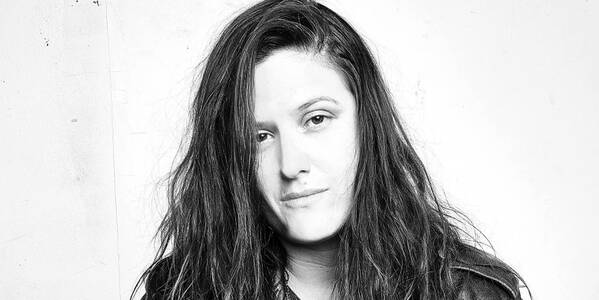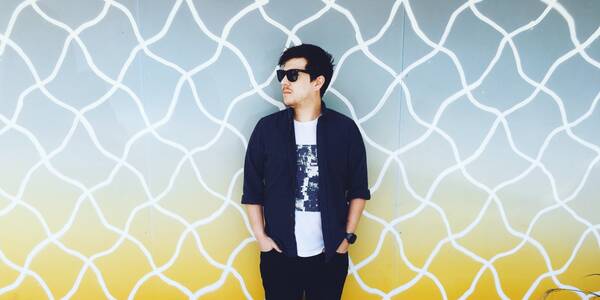profile / alumni / photography-and-imaging
September 28, 2021
By: Jamie Wetherbe
Inside Jobs: Meet Interior Photographer Christopher Dibble
ArtCenter: What inspired your current creative project?
Christopher Dibble (Photography '05): My first book, Modern Americana was released on April 20. Written by interior designer Max Humphrey and co-written with Chase Reynolds Ewald, the book contains around 150 images that I photographed of spaces designed and styled by Max. I began photographing Max's work when we met in Portland shortly after each of us made the move from Los Angeles. Because we had worked together so often, and the majority of our work published editorially, we had discussed photographing a book project as a potential next step.
About six months later, the conversation got serious and Max secured a book deal with Chase to be published by Gibbs Smith. Since I had already photographed all of his spaces, and we had a number of other projects we worked on together, we had a head start with half the book photographed. During the summer of 2020, we produced the other half. We worked for two months, producing about 75 images in spaces ranging from estates, antique shops, boutiques and backyards. It was a challenge producing so much work in such a short period of time and the pandemic didn't help. No assistants, no rentals. Just a camera, a tripod, a tiny light kit and lots of dedication..

My career has gone from editorial celebrity portraiture, to fashion catalogues, to interiors and architecture. It’s been a zigzag, but all land around things I have a passion for.
Christopher Dibble Photographer

AC: Where do you get inspiration?
CD: I think we can find inspiration just about anywhere. It depends on how we look things. A lot of my inspiration comes from film, art and photography, but recently I’ve been digesting photographic inspiration in a way that I haven’t before. I've begun looking at images to see what I would do differently and think about ways that I could elevate a particular photograph. A bit of a challenge, or assignment I suppose. I think this is a way for me to shake things up a bit, and change the way I look things and get inspired. How could I make an image of a room better? How could I make a portrait more intriguing? With inspiring films, I’m often drawn to the light and color, but also the story. I love when my images can tell a story.
AC: Describe the moment in your childhood where you first identified as an artist or designer?
CD: I’m not sure there was a particular moment in my childhood where I first identified as an artist, but I do recall my decision to dive deep into photography. I had been a fan of Stanley Kubrick’s for some time, and his work inspired me to learn more about cinematography. While exploring that at Pasadena City College, I read a quote from him that said, “To make a film entirely by yourself, which initially I did, you may not have to know very much about anything else, but you must know about photography.” This was what prompted me to begin formally studying photography, and eventually led me to ArtCenter.

AC: How were you exposed to great art and design as a child? Who were your favorites?
CD: I’m fortunate to have come from a family of artists. My grandfather was a newspaper photographer, and my father was a photographer and artist, so there was art throughout my childhood. One piece that I remember growing up with on our wall at home was a photograph of a man in a trench coat, standing in front of a sculpture, opening his coat with a quote that said “Expose Yourself To Art.” Fittingly enough, the man “exposing” himself to art was the future mayor of Portland, where I currently reside. And, I've been exposing myself to art ever since.
AC: What is your current obsession?
CD: I've always been obsessed with textiles, and currently, I’ve been weaving my own. I primarily weave hand towels and blankets on a floor loom, but also enjoy weaving knotted and woven rugs, as well as wall hangings.
AC: What’s the first site you look at when you open your computer in the morning?
CD: I don’t have a particular website I look at everyday, but the first thing I do when I open my computer is dive right into emails.

AC: How would your closest friend describe you?
CD: This one felt funny to answer on my own, so I paid… er… asked. "Loving, funny AF, passionate about everything and everyone in his life. Will always tell you the truth and take the time to break things down for you. A great teacher, supportive, motivates you to do better and be better. Very knowledgeable about everything, from art to crafters, and also useless stuff like 90 Day Fiancé. However, don’t rely on him to help wipe a baby worm that’s stuck to your leg while in the middle of a field in Chiang Mai."
AC: What books are on your bedside table?
CD: PhotoWork: Forty Photographers on Process and Practice, and The World According To Mister Rogers.
AC: What’s the one tool you can’t do without?
CD: Where there is a will, there is a way, but having to choose, I’d say my hands.
AC: Where is your happy place?
CD: Home. Not a building or a specific place, but a feeling. A less esoteric answer would be Italy.
AC: What is your prized possession?
CD: My education, formal and informal.

Alumni Q&A
Submit the Alumni Q&A questionnaire to share your story. We want to hear about your accomplishments, what you're working on and your advice for future ArtCenter students.
AC: What’s your best piece of advice for an ArtCenter student who’s interested in following your career path?
CD: The short answer, from a photography-business perspective is, learn how to read, understand and write a contract. If you don’t know what something means, ask for clarification. Having that clarity will save you time and heartache.
The long answer is more complicated. My career path has gone from editorial celebrity portraiture, to fashion catalogues, and now interiors and architecture. It’s been a bit of a zigzag, but all land around things I have a passion for: people, fashion and design. This has allowed me to grow and apply the principals I’ve learned from one subject to the next.
Photograph what you’re passionate about. While this doesn’t always guarantee financial success, it will give you more understanding of the subject you’re photographing.
Show your work, and meet people. You have the skills, but the relationships are just as important. Find out who you should be showing your work to. Editors at magazines? Art buyers at ad agencies? Gallerists? When I graduated, I wanted to work with magazines, so I made it a point to meet, in person, with as many magazines I could. When I shifted to photographing interiors, I made an effort to authentically connect with interior designers and publications. Beyond the initial outreach and meeting, I continue to foster those relationships and connections by finding common interests and staying in touch. Through this, I’ve made real connections and friendships with people I now get to work with.
Ask questions and listen. You don’t have to take every piece of advice given, but be open to receiving advice and critique, and apply it as you see fit. Don’t blindly reject or accept it. Also, share your knowledge.
Related

profile
Developing Rapport: Meet Photographer Jen Rosenstein
February 28, 2020

profile
A New Coat: Meet Besame Cosmetics Founder Gabriela Hernandez
November 19, 2019

profile


